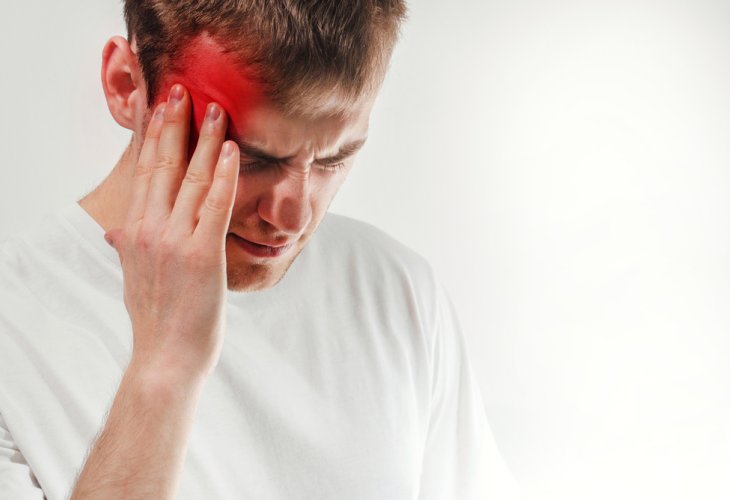Suffering from Migraines? Discover the Latest Solutions to Ease Your Life
Migraines are a significant burden for sufferers and their loved ones. It's important to learn about the latest innovations that may provide relief.
 (Photo: shutterstock)
(Photo: shutterstock)While migraines are not life-threatening, they do significantly affect the lives of sufferers and their loved ones. Currently, about one million people in Israel suffer from migraines, which impact their functionality and quality of life. In recent years, there has been a real revolution in treatment, making it essential to be aware of recent innovations that can drastically reduce the number of attacks.
Migraine is a condition that can be episodic or chronic, characterized by recurrent headaches with various physical symptoms. The word migraine originates from the Greek Hemicrania, meaning half the skull. It is more common among people aged 25-55 and is three times more prevalent in women. According to recent data, over one million people in Israel are diagnosed with migraines, but the actual number is likely higher due to undiagnosed cases. 30% of migraine sufferers in Israel also experience an aura, a precursor phase that can involve speech disturbances, visual impairments, and confusion for several minutes to an hour before or during the attack.
Apart from deteriorating quality of life, untreated migraines can lead to chronic migraines: more than 15 headache days a month, where at least eight of these episodes are severe and meet migraine criteria.
A migraine is defined as a headache that meets at least two of the following characteristics: unilateral, pulsating, moderate to severe intensity, worsens with movement, accompanied by nausea or vomiting, sensitivity to light or sound.
In children, migraines often start at ages correlated with hormonal changes (10-12) and may initially present with abdominal complaints and later accompanied by headaches.
Many, including patients themselves, often dismiss migraines merely as "a really bad headache" or a psychosomatic issue that will pass "with a glass of water." However, a migraine attack can last between 4 and 72 hours. In terms of its impact on life limitations or quality of life, migraines rank second. Chronic migraine sufferers lose many workdays, family activities are affected, and it can also impact relationships. Additionally, between 40-50% of migraine sufferers have other conditions like anxiety or depression, which may stem from the chronic nature of their migraines, highlighting the importance of rapid treatment despite few being aware of advancements in the field.
What Causes Migraines?
The precise physiological cause of migraines is not entirely known, but a prevalent theory called the "neurovascular theory" suggests that various factors in the nervous system, including inflammatory processes, lead to disruptions in brain activity, causing changes in blood flow to the brain and encouraging migraine development. The disease's pathology involves vascular dilation and stimulation of neural pathways transmitting pain signals in different cranial nerves. Therefore, some migraine medications work by constricting blood vessels to reduce pain.
It is commonly believed that migraines are complex neurovascular headaches caused by a combination of genetic and environmental factors.
How is Treatment Conducted?
For migraines, two treatment approaches are common: one is graded pharmaceutical treatment, initially with mild analgesics and then with specific migraine medications, sometimes combined. The other involves administering specific migraine medications as soon as an attack develops.
Until recently, treatments for severe attacks were preventive and used medications intended for other diseases, such as blood pressure treatment, and medications against depression, anxiety, or epilepsy, because these are effective for migraines at low doses. However, they were less effective and often had side effects as they were not specifically designed for migraines.
Recent research has advanced the understanding of the role of a protein called CGRP - Calcitonin Gene Related Peptide, which is significant in mediating the neural inflammation around blood vessels in the brain during migraines. We have learned that during a migraine attack, CGRP is released in large amounts in the brain membranes, causing inflammation and pain. This understanding has led to the development of new, specific treatments targeting this protein. Monthly injections are now available, allowing patients to self-administer them at home with very few side effects, significantly reducing the frequency and intensity of attacks by 50% or more.
Another modern treatment method involves injecting botulinum toxin in low doses and at specific sites found effective, such as the forehead, temples, upper and lower neck, and certain shoulder muscles. However, this treatment is only offered after other treatments have failed, and a neurologist diagnoses the frequency and duration of the attacks.
How to Ease Attacks?
Besides medication, it is essential to accept one's condition and the need for change, maintain proper nutrition, exercise, drink and eat regularly, get sufficient sleep (without overdoing it), and reduce stress levels. People who are more stressed and suffer more from neck pain during stress could experience more frequent migraines.
Treatment Compliance
First, it is recommended to consult with a neurologist for the most suitable treatment for you. Treatment compliance for migraines is crucial as proper treatment can reduce headache frequency and severity by 50% or more, significantly improving diagnosed individuals' quality of life. The better the treatment compliance, the better the patients' condition.
Stress Reduction
Migraine sufferers are advised to apply relaxation techniques to reduce mental stress and tension that might worsen the frequency and severity of attacks. Complementary medicine methods, mindfulness techniques, and even hypnosis, shown in limited studies to be effective for this purpose, can be helpful.
Healthy Lifestyle
A healthy lifestyle is a central component in maintaining good quality of life alongside migraines, including adhering to a healthy diet, maintaining a normal weight, engaging in regular physical activity (avoiding sports that may trigger migraines), and ensuring quality sleep at night.
Dr. Maria Bavim-Rabai is a specialist neurologist and a senior neurologist at the headache clinic in Ichilov.

